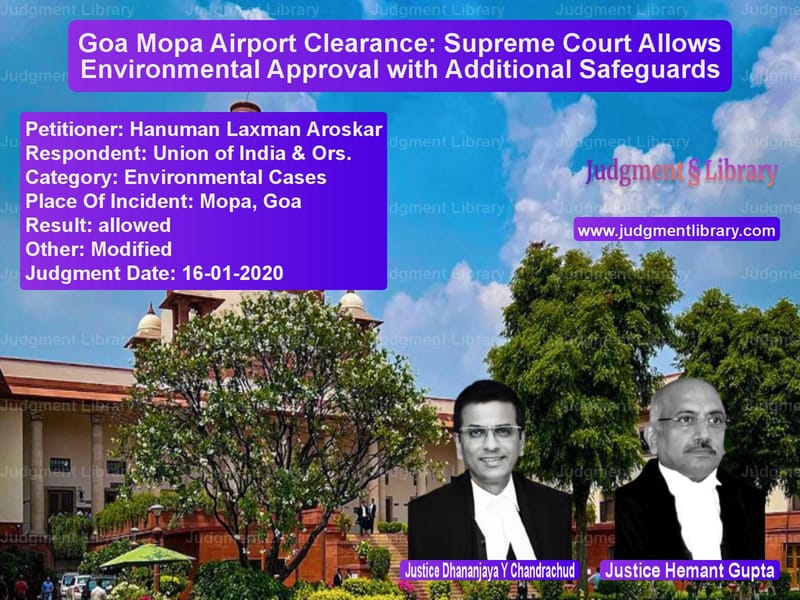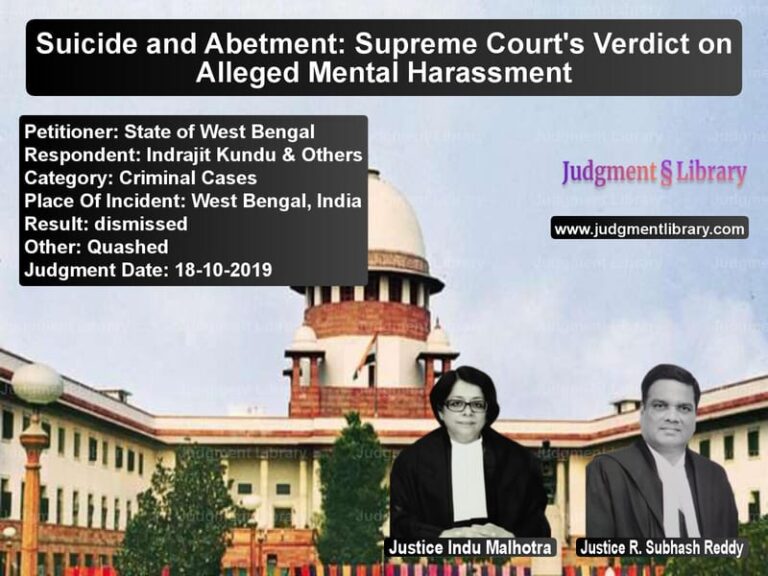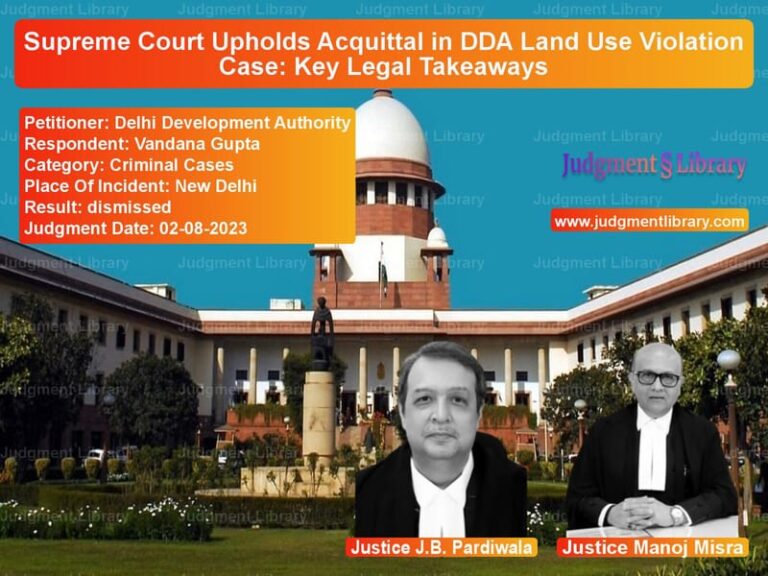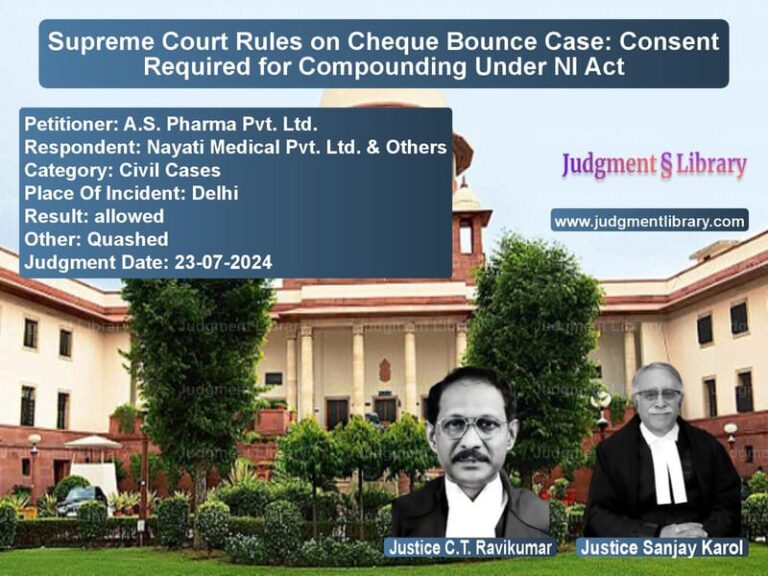Goa Mopa Airport Clearance: Supreme Court Allows Environmental Approval with Additional Safeguards
The case of Hanuman Laxman Aroskar vs. Union of India & Ors. revolves around the environmental clearance granted for the Mopa Greenfield Airport in Goa. The Supreme Court initially suspended the clearance due to concerns over inadequate environmental impact assessments. However, after further scrutiny, it allowed the project to proceed with additional environmental safeguards.
The ruling addresses the balance between infrastructure development and environmental conservation, focusing on the protection of the Western Ghats and ecological sensitive areas (ESAs).
Background of the Case
- The project proponent, the Government of Goa, sought environmental clearance for constructing a greenfield airport at Mopa to address growing air traffic.
- The clearance was granted by the Ministry of Environment, Forests and Climate Change (MoEFCC) on October 28, 2015.
- The clearance was challenged before the National Green Tribunal (NGT), which upheld the approval but imposed certain conditions.
- In 2019, the Supreme Court suspended the environmental clearance, citing inadequate environmental assessments and procedural lapses.
- The court directed the Expert Appraisal Committee (EAC) to revisit its recommendations and impose additional safeguards if required.
Key Legal Issues Considered
- Whether the EAC had adequately assessed the environmental impact before granting clearance.
- Whether the airport construction would harm the biodiversity of the Western Ghats.
- Whether sufficient mitigation measures were imposed to protect flora, fauna, water bodies, and air quality.
- Whether the project proponent had disclosed complete information on the existence of reserved forests and ecological sensitive areas within a 15-km radius.
Arguments of the Petitioner (Hanuman Laxman Aroskar)
- The petitioner argued that the EIA report failed to provide complete details of the forests, water bodies, and biodiversity affected by the project.
- The EAC’s approval was based on incomplete and misleading data from the project proponent.
- The Western Ghats are a biodiversity hotspot, and the construction of an airport would have long-term ecological consequences.
- The environmental clearance should have been granted only after conducting an independent ecological assessment and consulting all stakeholders.
Arguments of the Respondents (Union of India & State of Goa)
- The government argued that the airport was essential to boost tourism and economic growth in Goa.
- It contended that the EAC had revisited the approval and imposed additional environmental safeguards.
- It assured the court that measures such as reforestation, zero-carbon initiatives, and wildlife protection had been incorporated.
- The government also submitted that the mitigation measures were sufficient to offset any adverse environmental impact caused by the airport.
Supreme Court’s Observations
- The Court noted that the EAC had initially failed to consider all environmental aspects before granting clearance.
- It acknowledged that the Western Ghats needed special protection due to their ecological significance.
- However, after a review, the Court found that the additional conditions imposed by the EAC sufficiently addressed environmental concerns.
- The Court observed: “The additional conditions imposed, including afforestation and water conservation measures, will ensure minimal impact on the ecosystem.”
- It directed the project proponent to implement a Zero Carbon Programme to reduce emissions from the airport.
Final Judgment
The Supreme Court lifted the suspension on environmental clearance, allowing the airport construction to proceed with the following conditions:
- The project must implement a Zero Carbon Programme with renewable energy usage and low-emission technologies.
- A minimum of 550,000 trees must be planted to compensate for deforestation.
- The project proponent must establish an independent environmental monitoring committee to oversee compliance.
- The National Environmental Engineering Research Institute (NEERI) will oversee the implementation of environmental safeguards.
- Strict guidelines must be followed to prevent soil erosion, noise pollution, and disturbance to wildlife.
The ruling establishes a precedent for balancing infrastructure development with environmental conservation, ensuring that large-scale projects adhere to strict environmental guidelines.
Petitioner Name: Hanuman Laxman Aroskar.Respondent Name: Union of India & Ors..Judgment By: Justice Dhananjaya Y Chandrachud, Justice Hemant Gupta.Place Of Incident: Mopa, Goa.Judgment Date: 16-01-2020.
Don’t miss out on the full details! Download the complete judgment in PDF format below and gain valuable insights instantly!
Download Judgment: Hanuman Laxman Arosk vs Union of India & Ors Supreme Court of India Judgment Dated 16-01-2020.pdf
Direct Downlaod Judgment: Direct downlaod this Judgment
See all petitions in Environmental Cases
See all petitions in Public Interest Litigation
See all petitions in Legislative Powers
See all petitions in Judgment by Dhananjaya Y Chandrachud
See all petitions in Judgment by Hemant Gupta
See all petitions in allowed
See all petitions in Modified
See all petitions in supreme court of India judgments January 2020
See all petitions in 2020 judgments
See all posts in Environmental Cases Category
See all allowed petitions in Environmental Cases Category
See all Dismissed petitions in Environmental Cases Category
See all partially allowed petitions in Environmental Cases Category







